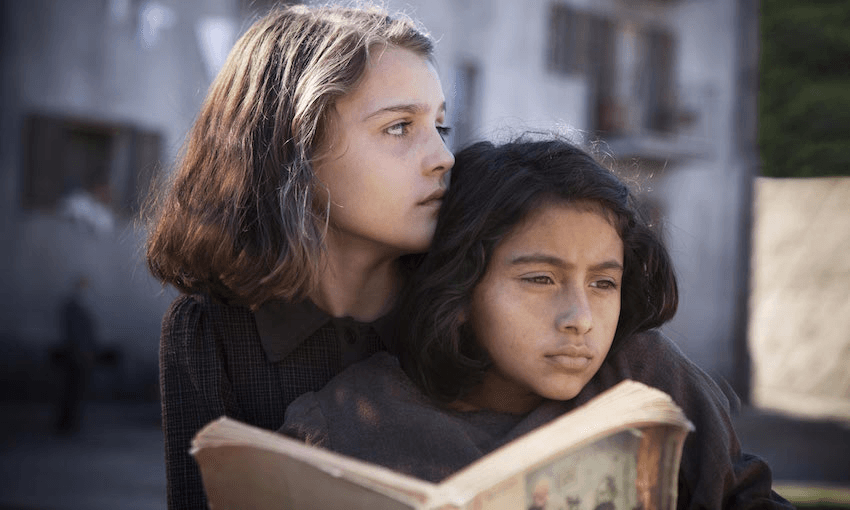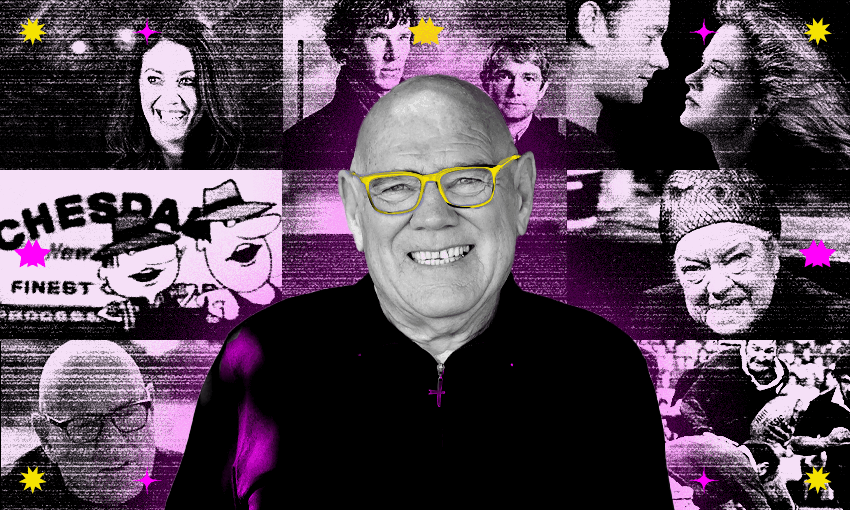It’s a story as old as time: a great book makes for a perfectly fine television series. Sam Brooks reviews My Brilliant Friend.
You know how when you see a photo of the Mona Lisa it doesn’t look that impressive? When you’re actually there in front of it – despite its suprisingly small size, despite the tourist throng around you – it’s a thing to marvel at. You get the beauty of it, in a way you never can from the reproduction.
It’s a similar experience when you’re watching a merely decent adaptation of a great piece of art. Your Les Liaisons Dangereuses to your Dangerous Liaisons, your Dangerous Liaisons to your Cruel Intentions, your A Star is Born to your… A Star is Born, I suppose. The original is there, on some level, but you’re watching the wrong version of it.
My Brilliant Friend is the first of Elena Ferrante’s Neapolitan Novels, a series of four books following Lena and Lilu, two young girls in 1950s Naples, and the friendship that continues over the course of their lives. It’s a tale of women existing in a man’s world, and how their friendship saves them both from patriarchy’s worst assaults. The series has sold ten million copies around the world, been translated from its native Italian into a bunch of languages, and I can guarantee at least one of your aunts spent six months trying to get through the first one before giving up on it.
Luckily for your aunt, My Brilliant Friend (the entire series, actually) has been made into a very handsome television series, courtesy of HBO (you know who HBO is), RAI and TIMvision (two Italian channels you absolutely probably haven’t heard of).
When adapting a piece of work – whether it’s book to film, book to play, or movie to musical – there’s a choice the adapter has to make: do you stay reverent to the original work or do you distill its essence and go your own way? Without having read a single word of Ferrante’s novels, I can tell that this mini-series has gone the route of hands-and-knees reverence.
There’s no doubt that the series comes from rich source material – the reviews and legacy of the not-even-a-decade old book speak for itself – but we’ve seen countless great works destroyed by too-faithful adaptations. Adherence to stately, beautiful prose has killed many an adaptation, whether to film or television. Reverence can only take you so far, as far as art goes, and I’d argue that it goes nowhere near as far as the distillation method. Look at what The Little Drummer Girl has done by taking the source material and running with it, tossing it up into the air every now and then to see what flakes off.
I return to the word ‘handsome’. This is a gorgeous looking (and sounding) television series, by which I mean it looks like a lot of money has been spent on it. And it pays off – this really does look like what I assume Naples in the 1950s looks like. It takes a lot of money to make something look this authentically dusty and sad!
The acting is very good, especially from the children playing Lila and Lenu, and Max Richter’s largely pre-existing score anchors the more dramatic moments in a visceral, bloody mood. The establishing moment of the girls’ friendship, when they throw rocks back at bullying boys, is underscored with Richter’s rearrangement of Vivaldi’s Summer concerto, and it’s by far the most memorable moment of either episode I’ve watched. What has been lovely up until that point suddenly feels real; what has been remote feels human.
Unfortunately, My Brilliant Friend is muted to a fault, at least visually. Even without reading the book, you can feel Ferrante’s gorgeous prose creeping in at the edges. Take, for example, this passage:
“We were twelve years old, but we walked along the hot streets of the neighborhood, amid the dust and flies that the occasional old trucks stirred up as they passed, like two old ladies taking the measure of lives of disappointment, clinging tightly to each other. No one understood us, only we two—I thought—understood one another.”
That’s gorgeous, and when you’re reading it on the page, it feels immediate. You can almost smell 1950s Naples, or at least Elena Ferrante’s interpretation of it. In the television series, this is rendered with loving detail, but with none of the heart of Elena Ferrante. The shots are stately and beautiful, the colours are are a muddy cacophony of browns and greys, but it never feels particularly alive as a piece of art. Instead, it’s largely bloodless and remote, at least two episodes in, when we’re still setting things up. It’s important to remember that although this is an eight episode mini-series, it’s the first of four mini-series in total, each with eight episodes. That’s thirty-two hours, y’all, and things could wildly change.
At this stage, My Brilliant Friend stands resolutely, stubbornly, still. There’s a quiet resonance in the constant insistence of these girl’s futility in a man’s world – their fight to simply be educated is distressing and genuinely heartrending – and if the series had some of the tense, beautiful energy of the performers, there would be something special here.
But, as it stands, My Brilliant Friend feels like looking at a photo of a beautiful painting. There’s nothing inherently wrong with the photo – it’s capturing all the details – but why wouldn’t you just look at the painting?
New episodes of My Brilliant Friend air on TVNZ on Demand every Monday and Tuesday night.



